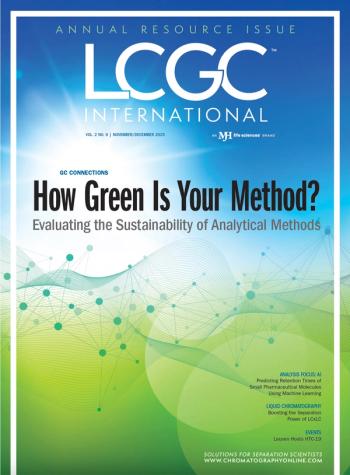
- The Column-11-07-2012
- Volume 8
- Issue 20
Dragon's blood
"Dragon's Blood"(DB) has become increasingly popular in Europe and the USA this year. Marketed as an anti-ageing compound within cosmetics, DB is a deep red resin secreted from the fruit of the dragon tree species, Daemonorops draco. Scientists in China 2 believe they have identified two novel biomarkers that could be used in the QC of DB.
‘Dragon’s Blood’ (DB) has become increasingly popular in Europe and the USA this year. Marketed as an anti‑ageing compound within cosmetics, DB is a deep red resin secreted from the fruit of the dragon tree species, Daemonorops draco. Historically used in Chinese medicine to improve blood circulation for the treatment of traumatic injuries, it also has reported antimicrobial, antiviral, antitumor and cytotoxic activity.1 However, as with the claims of many other cosmetics and herbal preparations, the actual concentrations of active ingredients are often below the effective level for action.
At the present time, there is only one biomarker that is quantified for quality control (QC) purposes within Dragon’s Blood, dracorhodin, and as there is an inherent variability in biomarker concentration this is an unreliable quality control method. Scientists in China 2 believe they have identified two novel biomarkers that could be used in the QC of DB. Using ultra-high performance liquid chromatography (UHPLC) coupled with a photodiode array (PAD) and electron ionization mass spectrometry (ESI‑MS), the scientists characterized six flavenoids known to be contained in the DB resin. The scientists identified two novel potential biomarkers, (2S)-5-methoxyflavan-7-ol and (2S)‑5‑methoxy-6-methylfavan-7-ol. It is hoped that with further investigation, the QC analysis method used will improve the quality of DB products.
1. J. Shi et al, J Sep Sci. 32(23–24), 4040–7 (2009).
2. T. Yi et al, Chemistry Central Journal, 6(116)(2012).
Articles in this issue
about 13 years ago
Breath analysisabout 13 years ago
Forensic fingerprintingabout 13 years ago
Helium Crisis or Helium Hype?about 13 years ago
Market Profile: Dissolution Testingabout 13 years ago
Fighting bacterial resistanceNewsletter
Join the global community of analytical scientists who trust LCGC for insights on the latest techniques, trends, and expert solutions in chromatography.



